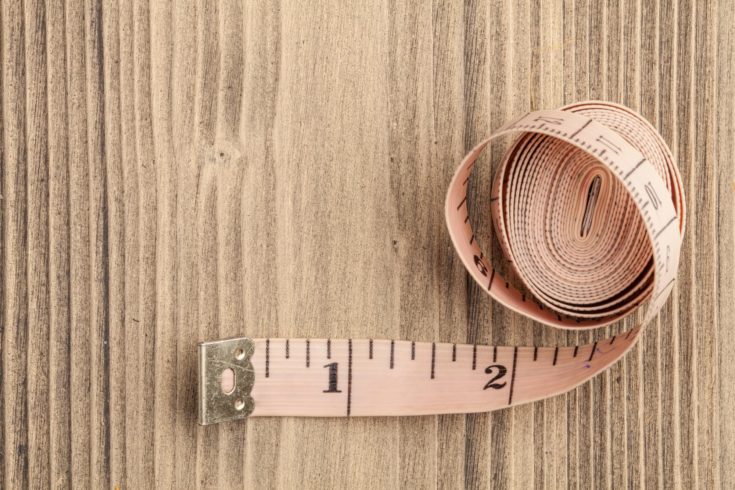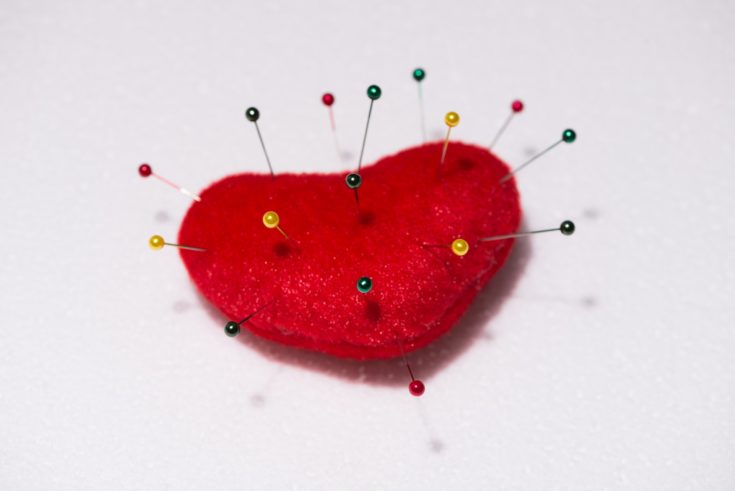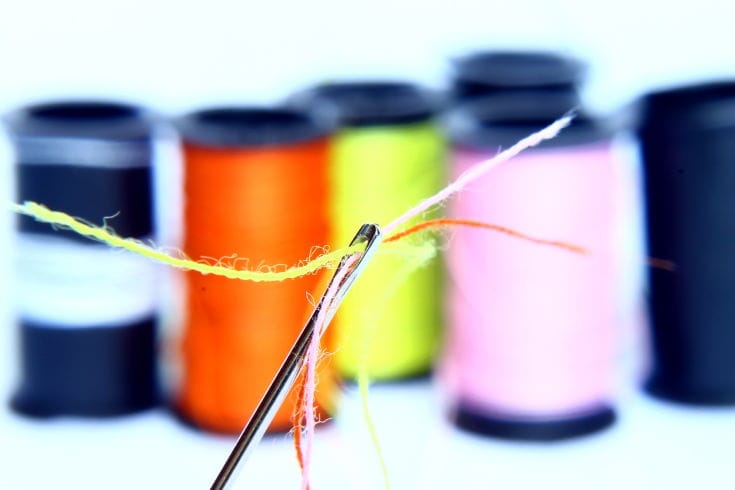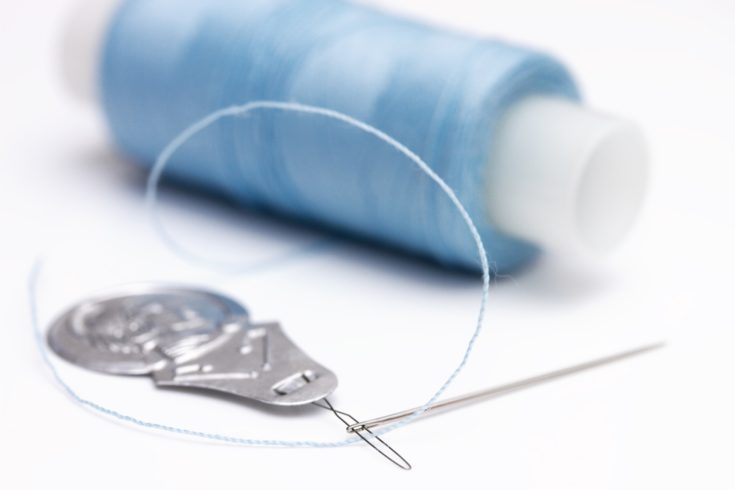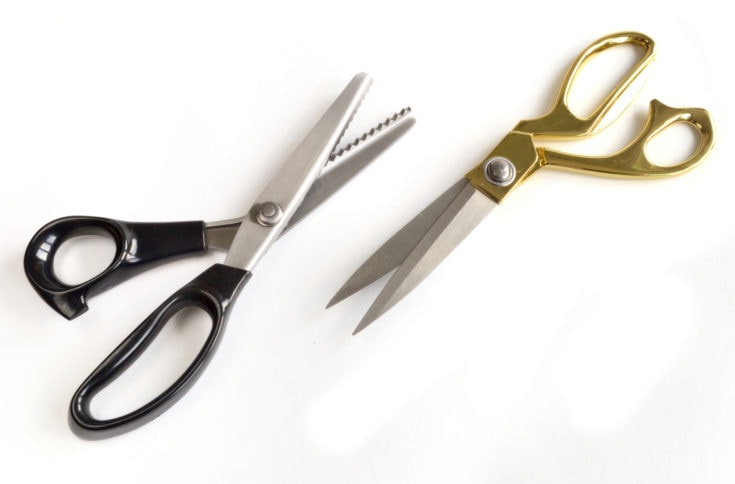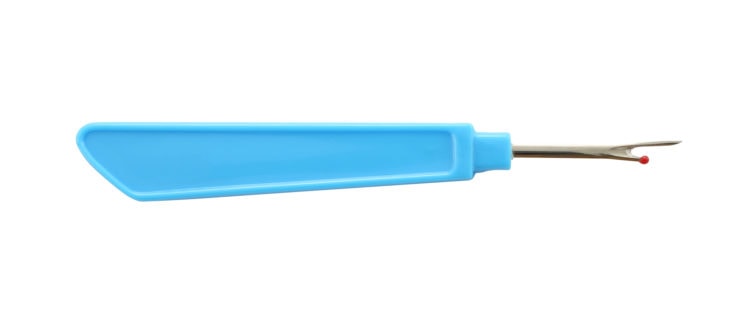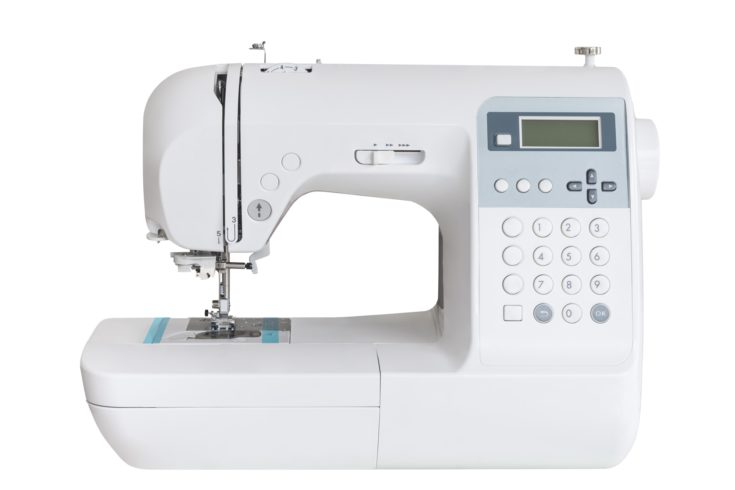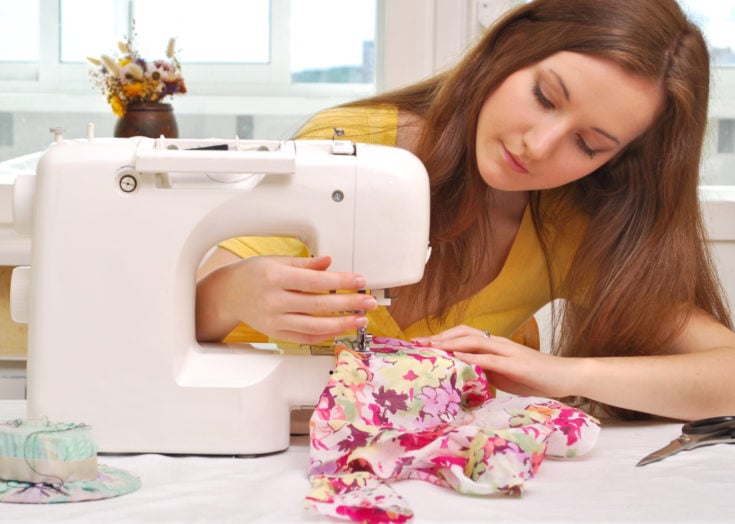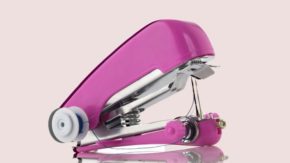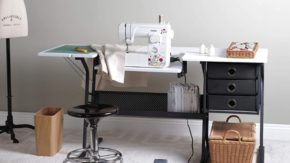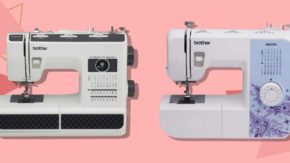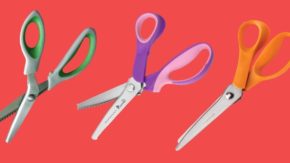Sewing can be quite the hobby once you get the hang of it. It allows you to create wonderful crafts and clothes, but also to repair or repurpose older ones. But, just like every other craft, sewing does take practice to master, and you are going to have to learn about the tools and equipment that you can use. Some tools are pretty basic (and mandatory) for those who want to learn how to sew, while others can be considered more advanced, for taking sewing up a notch.
Sewing Tools & Equipment You Should Know About
Tape Measure
A tape measure is something that you absolutely must own if you want to have a complete sewing kit for beginners. In fact, people who have been sewing for a long time will most likely have more than just one of these.
You want to buy a tape measure that has inches marked on one side and centimeters or millimeters marked on the other. Usually, the tape measure is designed for measuring different parts of a person’s body, but you will also find it useful in measuring fabric or zippers. It is a must-have tool in the kit of every sewing enthusiast.
Pins
Pins are part of streamlining your sewing project. You could probably do without them, but once you use them for something, you’ll want to use them for everything. Pins are particularly useful when you want to hold pieces of fabric together, but also for making hems, marking clothing measurements, and other useful purposes.
With their colorful heads, pins are super cool-looking (aside from being useful), but you have to take into account the fact that they too are available in shapes and sizes, and this information is helpful in different ways. For instance, if you want to put pins in a piece of fabric as fine as silk, standard pins will leave holes in the fabric, in which case you want to use finer pins.
Pincushion
Hand-in-hand with pins, pincushions make every sewer (no, not the “underground pipe channel” type of sewer, but the person who sews) look like a real pro. The main role of a pincushion is to keep all pins in one place, but also in a position that makes it easy for you to grab a pin with one hand.
A pin cushion is used for needles and pins alike and will hold them in a straight position, always at your disposal. The best part about pincushion is that they can have the shape, size, and color of your choice. You can even make your own pincushions if you like.
The best pincushions are the ones filled with wool roving or sawdust. For instance, wool roving is used because of its lanolin content, which prevents pin rusting. Those of you fond of the idea of making your own pincushions can try using crushed walnut shells as a sawdust substitute.
Hand-Sewing Needles
There are two different kinds of needles that you’ll be using when sewing: either those for hand-sewing, or sewing machine needles. When it comes to the first kind, know that they are available in various sizes and different points.
For the most part, you will be using a type of sewing needle called a sharp. These have a medium length, go great with many different types of fabric, and have a round eye for you to insert the thread. Naturally, as you learn more about sewing, you will know how to choose the right needle for the particular project you’re working on.
For instance, you will use thicker needles for thicker fabrics and materials that are difficult to sew. For embroideries, you have specific needles that bare the same name. There’s also quilting needles, upholstery needles, and such others.
Helpful note: When you’re looking to buy needles, remember that small needles have large size numbers.
Sewing Needle Threader
This is a wonderful little tool to have when your eyesight is playing tricks and you can’t seems to get that thread inside your needle’s opening. The threader is super simple to use: its wire goes through the needle’s eye to create a thread opening. Pull the wire plus the thread back through the needle’s eye and you’re good to go.
You have to make sure that the needle has an opening that’s large enough to be used with your particular needle threader. Otherwise, you’ll be forcing both of these tools, and potentially cause the wire to break.
Thimble
The thimble is a very handy tool when you’re sewing by hand. It is a small metal object that’s designed to protect your finger and help you push a needle through different layers of fabric. Of course, thimbles have come a long way from the simple metal objects you might remember your mothers or grandmothers using when you were a kid. You can now buy colored thimbles decorated with stones.
Scissors
You won’t be able to call yourself a sewing expert if you don’t have at least a couple of pairs of scissors. These are good for cutting just about anything, provided that you always sharpen them so they don’t go dull (you should avoid cutting paper with your sewing scissors for that specific reason). Naturally, scissors also come in different shapes and sizes:
- Sewing scissors should be able to cut through just about any piece of fabric.
- General-use scissors are mostly used to cut through other types of materials excluding fabrics. They will be useful for cutting zippers, plastic, paper, or metallic trims. You should have a pair of general-use scissors in order to avoid using your actual sewing scissors for cutting stuff that’s not made from fabric.
- Pinking shears are easy to recognize because of their saw-tooth blades. They are used in order to cut edges in a zig-zag pattern, with the main purpose of preventing excessive fraying.
- Tailor scissors have pointed and tapered blades. They are useful for all sorts of projects, like quilting.
- Bent scissors are also easy to recognize because of the bent shape of the blades. The reason why these blades are shaped like this is to stay parallel to the table on which you’re cutting the fabric, which ensures a cleaner and more precise cut.
- Spring action shears are useful for people who have conditions such as arthritis or carpal tunnel. The handles are separated by a spring mechanism which requires less effort to open the blades.
Are you using cutters instead of scissors for your quilting or sewing projects? If so, you might consider using cutting mats for more precise cuts.
Seam Ripper
With a handy tool like the seam ripper, you can easily go back on some mistakes, such as having stitched the fabric wrong. If you try to use scissors to rip the seams, you could end up damaging the fabric, which is why this tool has a thin and precise tip.
Sewing Machine
We saved the best for last because sewing machines are a very broad topic to discuss. Choosing the right type of sewing machine is a very complex process that requires an understanding of how different types of machines work in order to determine which type of machine is best suited for your current situation.
Generally speaking, sewing machines are of two major types: mechanical and computerized. A mechanical model, as the name hints at, is made mostly from metal parts, and has a pretty basic design. Computerized models, on the other hand, have way more features and are operated in a much more different way.
Computerized models are “the thing” because they have various designs, but also feel very different when you use them. There are some questions to answer if you’re not sure which of these is best for you:
- Will you be using the sewing machine in one place or are you interested in portability? Mechanical sewing machines tends to be heavier because they contain more metal parts.
- Do you need a machine with a quiet operation? Computerized models tend to be quieter.
- Have you used a mechanical machine in the past and love how it feels? You might not want to make the change to a computerized model if you love how the mechanical ones feel.
But the series of differences and features of sewing machines don’t stop there. There’s plenty of terminologies that you have to get acquainted with in order to make the right purchasing decision. You might want to consider the following aspects as well:
- These devices are also divided into top-loading and front-loading machines. The first category features a drop-in bobbin, which can usually be seen through a clear lid. The second category has a bobbin that’s hidden underneath a trap door, and you won’t be able to see it unless you open that compartment. Top-loading machines are typically a better choice for first-time sewing enthusiasts.
- If you buy a simple sewing machine, it might come with a very limited number of presser feet. You might want to buy more, or look for machines that already include several presser feet in their package.
- The maximum stitch width will determine how much you pay for a sewing machine. Typically, a sewing machine will have about 7 mm maximum width, while cheaper models have 5 mm maximum width. For the first category, finding sewing machine accessories will be easier.
- Some sewing machines have free arms, and this is a feature that you might benefit from. Free arms are really convenient for sewing sleeves or pockets.
- There are sewing machines out there designed specifically for embroideries and crafts. While they may be too much of an investment for first-time sewers, they are an option worth considering if you plan on making plenty of embroideries.
**Read More – What is interfacing in sewing?**
Sewing Tips for Beginners
To develop really amazing sewing skills, you’re going to have to practice a lot, but when you’re at the beginning of this journey, you might feel discouraged and unsure of where to start. Here are some tips that might help you get on the right track:
- Be careful about what you invest at first. Sure, having a sewing machine is great, but first, you’ll have to learn how to handsaw in order to understand the basics of the craft. Then, you should be careful with what you spend your money on. There are beginner’s sewing machines, and more advanced ones, which obviously cost a lot more money. But, whenever you feel ready to take the leap, invest in a higher quality sewing machine. You will feel the difference as soon as you dig into the different stitching patterns and automatic threading, which makes your sewing experience smoother.
- Wash the fabrics before you work with them. This will help you avoid any unpleasant surprises, like fabric shrinking after washing. With a simple pre-washing, you can also determine if the color of the fabric fades away or not.
- Use a clothing iron for sewing. This will help you press the fabric, but also strengthen the seams. For example, press your seams flat after sewing, as this will meld the stitches and make them smoother.
- Practice hand sewing as often as you can. This will help you improve your sewing skills, and it’s something that can really improve your stitches.
- Never try to figure out how a sewing machine works by yourself. Read the instructions of the machine carefully. By staying informed, not only will you be able to prevent errors, but you’ll also learn how to handle situations such as jammed threads and other such scenarios.
Conclusion
Buying the right sewing tools might be something that takes a little time, particularly for those of you who have never tried sewing something before. It’s easy to get lost in the immense pool of products, with so much variety that you’re not sure which are good and which are bad.
And if you haven’t already, get yourself a decent table and chair for your sewing machine setup. These also the things you should have once you’re hooked on those sewing projects you’ve been itching to try.
The most important part is to stick with the budget and not to buy tools and equipment that you’re not sure you’ll need. For a simple project, you won’t need an $800 sewing machine. Only when you’ve given yourself time to learn and decide to tackle more complicated projects, then you can further invest in the right accessories for sewing.
